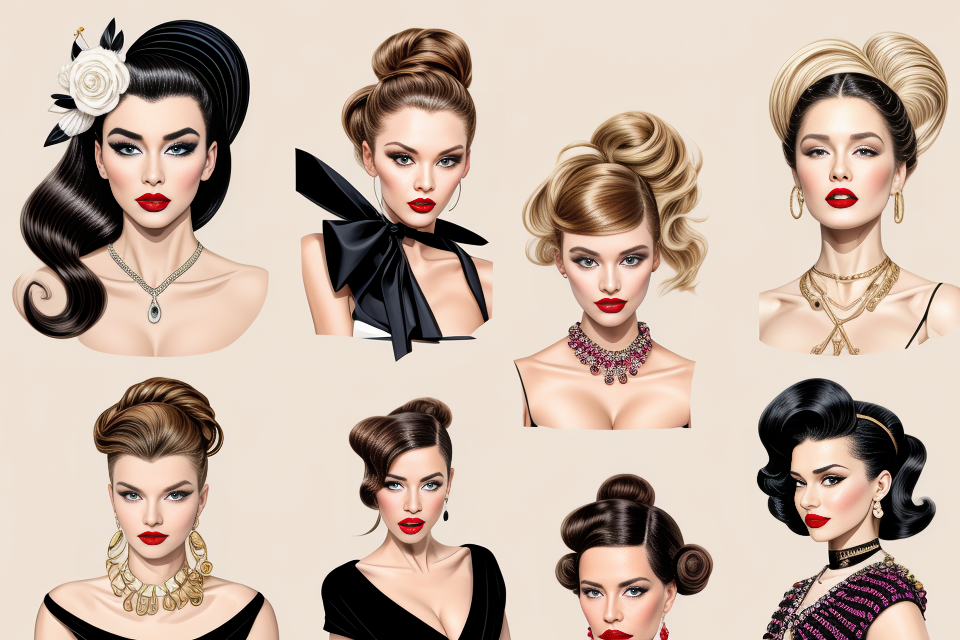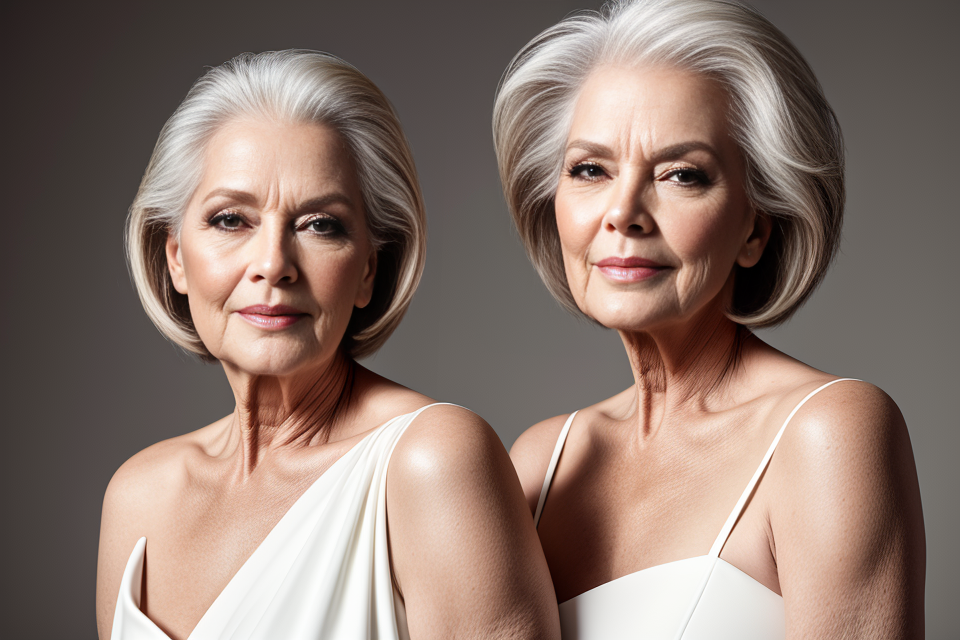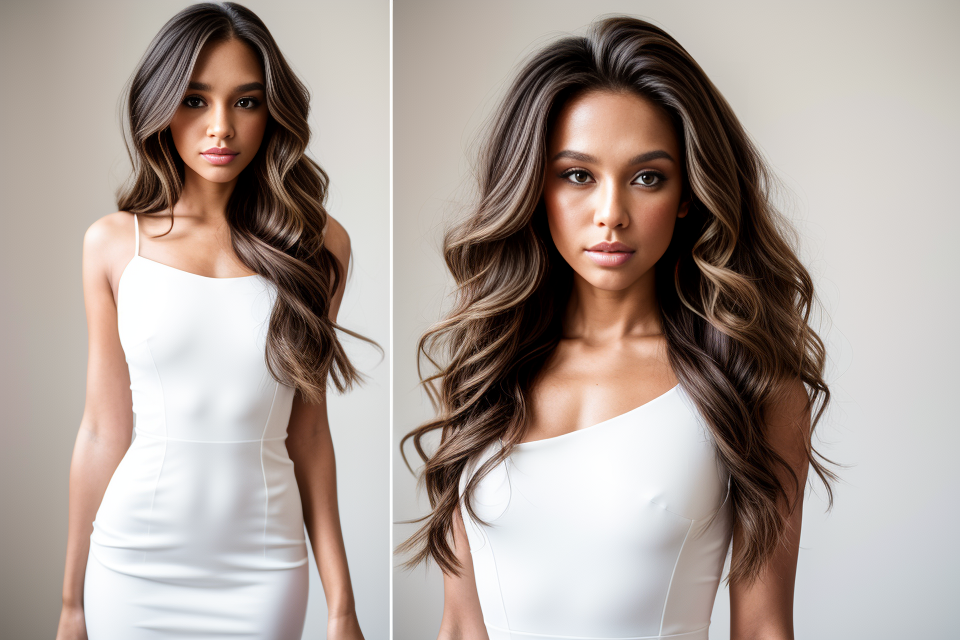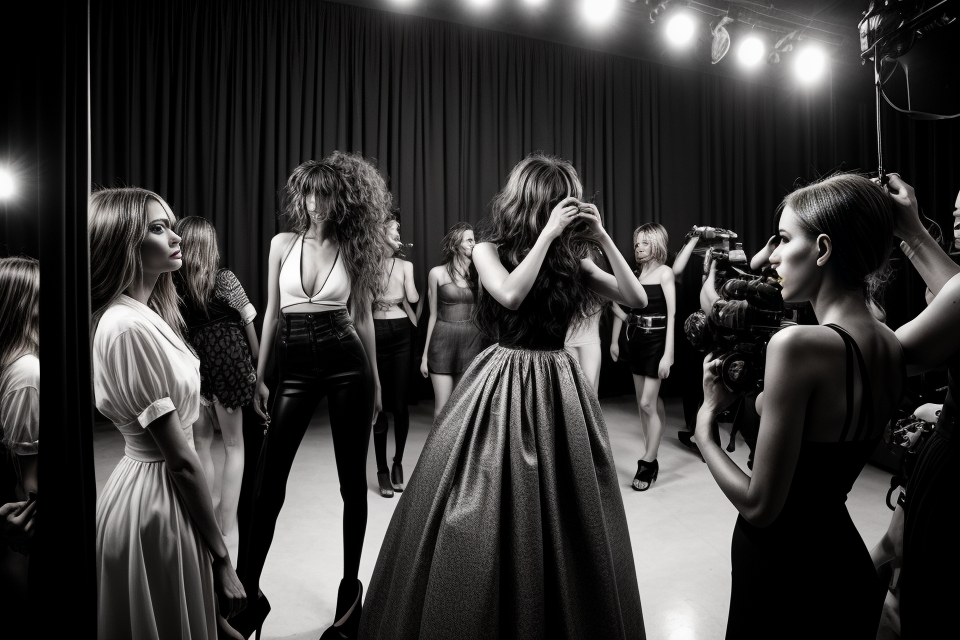
The fashion industry is often criticized for promoting unrealistic beauty standards, and the role of fashion models in perpetuating these standards is a topic of much debate. But do fashion models really have to be pretty? In this exploration, we will delve into the history of fashion modeling and the various factors that contribute to the current state of the industry. We will examine the pressure on models to conform to certain physical ideals, and how this affects their mental and emotional well-being. Additionally, we will explore the growing movement towards more inclusive and diverse representation in fashion, and the potential impact this could have on the industry as a whole. So, let’s dive in and explore the world of fashion modeling and the beauty standards that come with it.
What Makes a Successful Fashion Model?
Physical Attributes
The physical attributes of a successful fashion model play a crucial role in determining their marketability and the types of roles they can play in the industry. Some of the most important physical attributes include:
- Height and body proportions: Traditionally, fashion models have been tall and slender, with measurements of 34 inches around the bust, 24 inches around the waist, and 34 inches around the hips. However, in recent years, there has been a shift towards more diverse body types, with plus-size models gaining popularity and being featured in mainstream fashion campaigns.
- Skin complexion and facial features: Fashion models are often expected to have clear, glowing skin with minimal blemishes or imperfections. In terms of facial features, a strong jawline, high cheekbones, and full lips are considered desirable. Additionally, models with distinctive features such as freckles or unusual eye colors can also be successful, provided they have a strong overall look.
- Hair type and color: The hair of a fashion model should be healthy, shiny, and easy to style. Straight hair is generally preferred, but models with curly or wavy hair can also be successful, provided they have a strong overall look. Blonde hair is traditionally considered the most desirable, but models with other hair colors such as brunette or red can also be successful.
Personality Traits
Aside from physical attributes, personality traits play a crucial role in determining the success of a fashion model. The following are some of the key personality traits that are highly valued in the fashion industry:
Confidence and Charisma
Confidence and charisma are essential traits for a successful fashion model. A model who exudes confidence on the runway or during photo shoots can captivate the audience and leave a lasting impression. Charisma is the ability to attract and influence others, and it is a critical aspect of modeling. Models with charisma can connect with the audience and bring the clothing to life, making the fashion show or photo shoot more memorable.
Adaptability and Flexibility
Fashion models are often required to work in different environments, such as studios, runways, and outdoor locations. They need to be adaptable and flexible to work in various settings and circumstances. Adaptability refers to the ability to adjust to new situations, while flexibility is the willingness to change and try new things. A model who is adaptable and flexible can easily adjust to the demands of the job and work effectively in different environments.
Professionalism and Work Ethic
Professionalism and work ethic are also important personality traits for a successful fashion model. The fashion industry is fast-paced and demanding, and models need to be reliable, punctual, and dedicated to their work. Professionalism is about maintaining a high standard of work and conduct, while a good work ethic is about being committed to the job and giving it your best effort. Models who are professional and have a strong work ethic are valued by clients and are more likely to succeed in the industry.
The History of Beauty Standards in Fashion Modeling
The Evolution of Ideal Beauty
The 1950s and 1960s: The Waif Look
During the 1950s and 1960s, fashion models were often thin and boyish, with a waif-like appearance. This was largely due to the influence of designers such as Christian Dior, who preferred models with a youthful, fragile look. The waif look was characterized by a low body weight, pale skin, and large eyes, and was widely popularized by models such as Twiggy and Jean Shrimpton.
The 1970s and 1980s: The Supermodel Era
In the 1970s and 1980s, the fashion industry experienced a shift towards more diverse and confident models, who were often referred to as “supermodels.” This era was marked by the rise of models such as Naomi Campbell, Cindy Crawford, and Christy Turlington, who were known for their athletic and confident appearances. The supermodel era was characterized by a more diverse range of body types and features, and models were often showcased in campaigns for high-end designers and brands.
The 1990s and 2000s: The Diversity Movement
In the 1990s and 2000s, the fashion industry experienced a renewed focus on diversity and inclusivity, with models of all races, ethnicities, and body types being featured in campaigns and runway shows. This movement was largely driven by a growing awareness of the importance of representation and inclusivity in the fashion industry, as well as the emergence of new designers and brands that were committed to showcasing a wide range of models.
The 2010s and Beyond: The Current Landscape
In the 2010s and beyond, the fashion industry has continued to evolve and diversify, with a growing emphasis on body positivity and self-expression. Models of all shapes, sizes, and backgrounds are now regularly featured in campaigns and runway shows, and there is a growing awareness of the importance of mental health and well-being among models. Additionally, there has been a growing trend towards the use of non-traditional models, such as older women and models with disabilities, in campaigns and shows.
The Impact of Social Media and Globalization
- The rise of influencers and Instagram models
- The proliferation of social media platforms has given rise to a new breed of fashion models – influencers and Instagram models. These individuals have amassed large followings by showcasing their unique styles and personalities, often pushing the boundaries of traditional beauty standards.
- Influencers and Instagram models have the power to shape public opinion and influence fashion trends. They have become a driving force behind the movement towards more inclusive and diverse beauty standards in fashion.
- The broadening of the definition of beauty
- Social media has also played a significant role in broadening the definition of beauty. Platforms like Instagram and TikTok have provided a platform for individuals of all shapes, sizes, and backgrounds to showcase their unique beauty and fashion sense.
- This has led to a greater appreciation for diversity and individuality in fashion, with more designers and brands embracing models who defy traditional beauty standards.
- The challenges of representing diversity in fashion
- Despite the progress made in recent years, there are still challenges when it comes to representing diversity in fashion. The industry remains predominantly white and slim, with few opportunities for models of color or larger sizes.
- Social media has helped to highlight these issues and bring attention to the need for greater diversity and inclusivity in fashion. However, there is still a long way to go in terms of achieving true representation and breaking down the barriers that continue to exclude certain groups from the industry.
The Future of Beauty Standards in Fashion Modeling
The Impact of Technology on Modeling
- Virtual reality and digital modeling
Virtual reality (VR) and digital modeling have transformed the fashion industry by creating new opportunities for models to showcase their skills and talents. With VR technology, models can create and showcase virtual fashion shows, runway presentations, and other digital events. This technology allows designers and brands to reach a wider audience and expand their market reach. Additionally, digital modeling allows models to create unique and innovative content, showcasing their creativity and versatility. - The use of artificial intelligence and augmented reality
Artificial intelligence (AI) and augmented reality (AR) are also being used in the fashion industry to create new and innovative experiences for models and consumers. AI algorithms can analyze and predict consumer trends, allowing brands to create more targeted and personalized marketing campaigns. AR technology can be used to create virtual try-on experiences, allowing consumers to try on clothes and accessories in a virtual environment. This technology can also be used to create virtual fitting rooms, providing a more personalized and interactive shopping experience for consumers. - The rise of new platforms and opportunities for models
New platforms and opportunities for models are emerging as technology continues to evolve. Social media platforms such as Instagram and TikTok have created new opportunities for models to showcase their talents and connect with audiences. These platforms provide models with a global reach and the ability to build a personal brand. Additionally, new technology is being developed to create more immersive and interactive experiences for models and consumers. For example, holographic technology can be used to create virtual runway shows and other interactive experiences. This technology has the potential to revolutionize the fashion industry and create new opportunities for models to showcase their talents and connect with audiences.
The Future of Diversity and Inclusion in Fashion
The continued push for more diverse representation
- As society becomes more aware of the importance of diversity and inclusion, the fashion industry is beginning to take notice.
- Brands and fashion houses are starting to recognize the value of diversity in their advertising and runway shows.
- This includes featuring models of different races, ages, and body types in their campaigns and runway shows.
The potential for new roles and opportunities for models
- With the push for more diversity and inclusion, there is also a greater need for models who can fill specific roles.
- For example, plus-size models are becoming more sought after for their unique perspective and ability to showcase clothing on a wider range of body types.
- Similarly, models with disabilities are also gaining more visibility and representation in the industry.
The challenges and opportunities of working with new technologies
- The fashion industry is constantly evolving, and new technologies are changing the way models work.
- For example, virtual reality technology is being used to create immersive experiences for consumers, while 3D printing is allowing designers to create unique and intricate pieces.
- These new technologies present both challenges and opportunities for models, who must adapt to new ways of working and showcasing their skills.
The Changing Role of Fashion Models
As the fashion industry continues to evolve, so too does the role of fashion models. No longer are they simply objects to be gazed upon, but they are becoming more involved in the creative process, taking on the role of content creators and influencers. Additionally, models are becoming more active in social and political issues, using their platforms to advocate for change and serve as role models for their followers. Finally, mental health and wellness are becoming increasingly important for models, as the industry recognizes the toll that high-pressure jobs can take on individuals.
- Model-as-creator and influencer: With the rise of social media, fashion models are no longer just passive subjects in photo shoots. They are now active participants in the creative process, using their platforms to showcase their own ideas and style. This shift has given models more control over their careers and has allowed them to branch out into other areas of the industry, such as styling and design.
- Models as activists and role models: As fashion models become more aware of their influence, they are using their platforms to speak out on social and political issues. Many models are using their platforms to advocate for body positivity, diversity, and inclusivity in the industry. They are also using their voices to raise awareness about important issues such as climate change and mental health.
- Mental health and wellness: The fashion industry has long been known for its high-pressure environment, and the impact on models’ mental health has been well-documented. However, in recent years, the industry has begun to take steps to address this issue. Many fashion houses now have mental health resources available for their models, and there is a growing movement to promote self-care and wellness within the industry.
FAQs
1. What are the typical physical characteristics of fashion models?
There is no one specific look that defines a fashion model, as the industry is diverse and inclusive. However, traditionally, fashion models have been characterized as having a particular height, weight, and body type. Generally, they are expected to be tall and slender, with a small waist and long legs. However, the beauty standards for fashion models have evolved over time, and more diverse body types are now being represented in the industry.
2. Is there a certain age range for fashion models?
Traditionally, fashion models tend to be young, with many starting their careers in their teenage years. However, the age range for fashion models has expanded in recent years, and models of all ages can now be seen on the runway and in campaigns. As long as a model can convey the desired look and energy for a particular campaign or show, their age is less of a factor in their selection.
3. Do fashion models have to be conventionally attractive?
Traditionally, fashion models have been expected to conform to certain beauty standards, which often included conventional attractiveness. However, the industry has become more diverse and inclusive in recent years, and models with a wider range of features and body types are now being represented. While beauty standards may still play a role in the selection process, fashion models today are more likely to be chosen for their unique features and energy rather than conforming to a specific ideal.
4. Can models with disabilities be fashion models?
Absolutely! The fashion industry has become more inclusive in recent years, and models with disabilities are now being represented in campaigns and on the runway. Models with disabilities bring a unique perspective and energy to the industry, and their presence helps to challenge traditional beauty standards and promote diversity and inclusivity.
5. Is there a specific height requirement for fashion models?
While there is no one specific height requirement for fashion models, traditionally, models tend to be tall and slender. However, the industry has become more diverse and inclusive, and models of all heights and body types can now be seen in campaigns and on the runway. The key factor in selecting a model for a particular job is whether they can convey the desired look and energy for the campaign or show.


